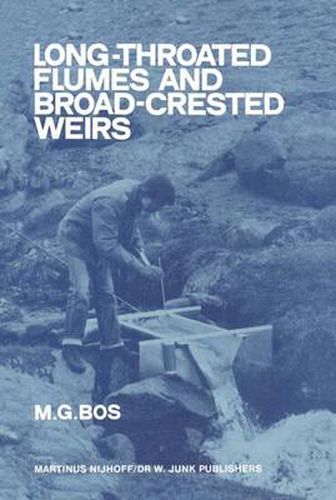Readings Newsletter
Become a Readings Member to make your shopping experience even easier.
Sign in or sign up for free!
You’re not far away from qualifying for FREE standard shipping within Australia
You’ve qualified for FREE standard shipping within Australia
The cart is loading…






This title is printed to order. This book may have been self-published. If so, we cannot guarantee the quality of the content. In the main most books will have gone through the editing process however some may not. We therefore suggest that you be aware of this before ordering this book. If in doubt check either the author or publisher’s details as we are unable to accept any returns unless they are faulty. Please contact us if you have any questions.
In the context of water management, structures that measure the flow rate in open channels are used for a variety of purposes: (i) In hydrology, they measure the discharge from catchments; (ii) In irrigation, they measure and control the distribution of water at canal bifurcations and at off-take structures; (iii) In sanitary engineering, they measure the flow from urban areas and industries into the drainage system; (iv) In both irrigation and drainage, they can control the upstream water at a desired level. This thesis represents an attempt to place such flow measurements on a solid foundation by explaining the theory of water flow through ‘long-throated flumes’ and their hydraulically related ‘broad-crested weirs’. On the basis of this theory, and on practical experience, these structures are recommended for use whenever the water surface in the channel at the measuring site can remain free. The thesis concludes with a design procedure that will facilitate the application of these structures. The idea to undertake research on discharge measurement structures was born upon my appointment as the first civil engineer with the International Institute for Land Reclamation and Improvement (ILRI). Because my recruiter, Ir. J.M. van Staveren, then Director of ILRI, had left the Institute before my arrival, and because I was the ‘first of my kind’ in an agricultural environment, I looked for contact and found - vii- support from: the late Prof. Ir. J. Nugteren, Prof. Ir.
$9.00 standard shipping within Australia
FREE standard shipping within Australia for orders over $100.00
Express & International shipping calculated at checkout
This title is printed to order. This book may have been self-published. If so, we cannot guarantee the quality of the content. In the main most books will have gone through the editing process however some may not. We therefore suggest that you be aware of this before ordering this book. If in doubt check either the author or publisher’s details as we are unable to accept any returns unless they are faulty. Please contact us if you have any questions.
In the context of water management, structures that measure the flow rate in open channels are used for a variety of purposes: (i) In hydrology, they measure the discharge from catchments; (ii) In irrigation, they measure and control the distribution of water at canal bifurcations and at off-take structures; (iii) In sanitary engineering, they measure the flow from urban areas and industries into the drainage system; (iv) In both irrigation and drainage, they can control the upstream water at a desired level. This thesis represents an attempt to place such flow measurements on a solid foundation by explaining the theory of water flow through ‘long-throated flumes’ and their hydraulically related ‘broad-crested weirs’. On the basis of this theory, and on practical experience, these structures are recommended for use whenever the water surface in the channel at the measuring site can remain free. The thesis concludes with a design procedure that will facilitate the application of these structures. The idea to undertake research on discharge measurement structures was born upon my appointment as the first civil engineer with the International Institute for Land Reclamation and Improvement (ILRI). Because my recruiter, Ir. J.M. van Staveren, then Director of ILRI, had left the Institute before my arrival, and because I was the ‘first of my kind’ in an agricultural environment, I looked for contact and found - vii- support from: the late Prof. Ir. J. Nugteren, Prof. Ir.